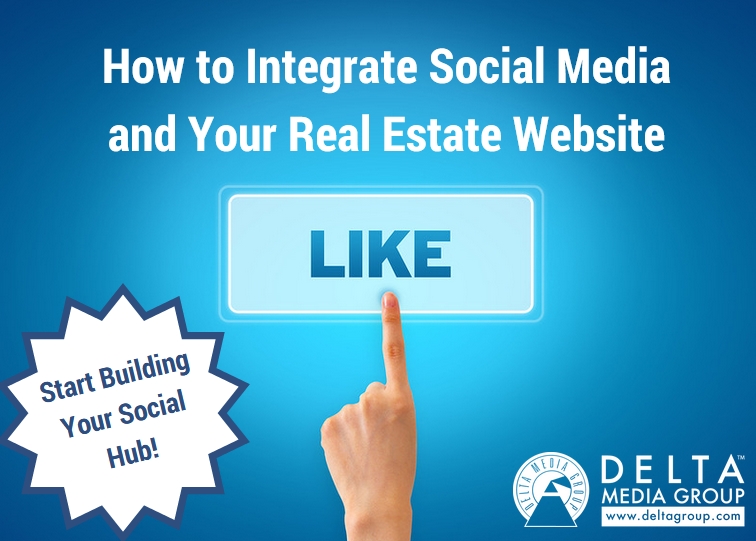You are viewing our site as a Broker, Switch Your View:
Agent | Broker Reset Filters to Default Back to ListHow to Integrate Social Media and Your Real Estate Website
April 06 2017

A dynamic social media presence is a must-have when it comes to online marketing. It's a fun, effective way to grow your business once you learn the ropes. Integrating your social media with your real estate website is one of the most important steps in the process, and a necessity for getting maximum value from your social investment. There is plenty of work to be done, and no time like the present to get started!
Building a Social Hub: How to Integrate Social Media for Real Estate Websites
Ideally, the relationship between your social media pages and your website should be symbiotic with each channel guiding traffic to the other. You want people who find you first via social to have an easy way to reach your website, research your listings, and consume your content. When a prospect finds your business through your website, you want to make it as easy as possible to connect and share your content on their social pages.
Add Social Share Buttons to Website Content
Social sharing buttons are exactly what they sound like—allowing website visitors to share your content to social media with one click. These buttons resemble the familiar logos of the major social media sites, and are typically positioned at the top or bottom of content so that readers have an easy way to share your insights. When people want to share your stuff, you want to make it as easy as possible for them to do so.
Format Content with Social in Mind
Social media users tend to favor content that is packed with information and easy to scan, whether using a desktop computer or mobile device. Using sub-headings, short paragraphs, and lists makes your content easier to consume, and more likely to be shared. The mobile audience for social media is huge, so it's also important to make sure every post looks good on smaller screens.
Use Social Feeds
By adding direct feeds for your main social media accounts to your website, you allow website visitors to see your latest social posts without having to sign in themselves. In addition to helping readers find your social media content, including direct feeds allows you to provide an example of why they should follow your social accounts in the first place.
Pairing Content with the Right Social Media Sites
Each social media site has its own niche, and user preferences. In order to maximize traffic for your website, it's important to understand which types of content works best with social media for real estate. Twitter is short, sweet, and to the point, while Instagram and Pinterest are very visual in nature. LinkedIn is the best place to connect with other businesses, while Facebook allows you to connect with just about everyone.
Embrace Analytics
No matter how much you study in advance, there is always a bit of trial and error to finding the right social mix for your business. The major social sites (Facebook, especially) do an excellent job of providing detailed analytics about what's working, what's not, and what you can do to improve the performance of your social presence. Familiarize yourself with the most important metrics for each social site, and keep track of them closely.
When developing and integrating social media for real estate starts to make your head spin, it helps to remember that you don't have to do it alone. Contact Delta Media Group for assistance with integrating your social media accounts, and all of your real estate marketing needs.
To view the original article, visit the Delta Media Group blog.









